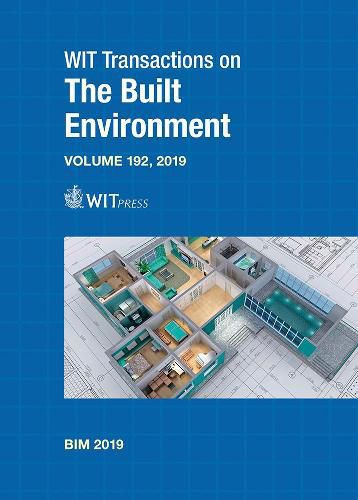Readings Newsletter
Become a Readings Member to make your shopping experience even easier.
Sign in or sign up for free!
You’re not far away from qualifying for FREE standard shipping within Australia
You’ve qualified for FREE standard shipping within Australia
The cart is loading…






This title is printed to order. This book may have been self-published. If so, we cannot guarantee the quality of the content. In the main most books will have gone through the editing process however some may not. We therefore suggest that you be aware of this before ordering this book. If in doubt check either the author or publisher’s details as we are unable to accept any returns unless they are faulty. Please contact us if you have any questions.
Originating from the 2019 International Conference on Building Information Modelling this book presents latest findings in the field. This volume presents research from a panel of experts from industry, practice and academia touching on key topics, the development of innovative solutions, and the identification future trends.
The modern construction industry and built environment disciplines have been transformed through the development of new and innovative BIM tools and techniques. These have fundamentally altered the manner in which construction teams operate; the processes through which designs are evolved; and the relationships between conceptual, detail, construction and life cycle stages.
BIM is essentially value-creating collaboration throughout the entire life-cycle of an asset, underpinned by the data attached to them. BIM has far and reaching consequences on both building procurement and infrastructure. This recent emergence constitutes one of the most exciting developments in the field of the Built Environment. These advances have offered project teams multi-sensory collaborative tools and opportunities for new communication structures.
The included papers focus on such topics as: BIM in design coordination, Construction operations; Building operation and maintenance; BIM and sustainability; Collaborative working and practices; Facilities management integration and GIS integration; Automation in construction; Health and safety; BIM and interoperability; Life cycle project management; Cultural heritage; BIM and Robotics; Risk analysis and management and Emergency analysis, planning and management.
$9.00 standard shipping within Australia
FREE standard shipping within Australia for orders over $100.00
Express & International shipping calculated at checkout
This title is printed to order. This book may have been self-published. If so, we cannot guarantee the quality of the content. In the main most books will have gone through the editing process however some may not. We therefore suggest that you be aware of this before ordering this book. If in doubt check either the author or publisher’s details as we are unable to accept any returns unless they are faulty. Please contact us if you have any questions.
Originating from the 2019 International Conference on Building Information Modelling this book presents latest findings in the field. This volume presents research from a panel of experts from industry, practice and academia touching on key topics, the development of innovative solutions, and the identification future trends.
The modern construction industry and built environment disciplines have been transformed through the development of new and innovative BIM tools and techniques. These have fundamentally altered the manner in which construction teams operate; the processes through which designs are evolved; and the relationships between conceptual, detail, construction and life cycle stages.
BIM is essentially value-creating collaboration throughout the entire life-cycle of an asset, underpinned by the data attached to them. BIM has far and reaching consequences on both building procurement and infrastructure. This recent emergence constitutes one of the most exciting developments in the field of the Built Environment. These advances have offered project teams multi-sensory collaborative tools and opportunities for new communication structures.
The included papers focus on such topics as: BIM in design coordination, Construction operations; Building operation and maintenance; BIM and sustainability; Collaborative working and practices; Facilities management integration and GIS integration; Automation in construction; Health and safety; BIM and interoperability; Life cycle project management; Cultural heritage; BIM and Robotics; Risk analysis and management and Emergency analysis, planning and management.